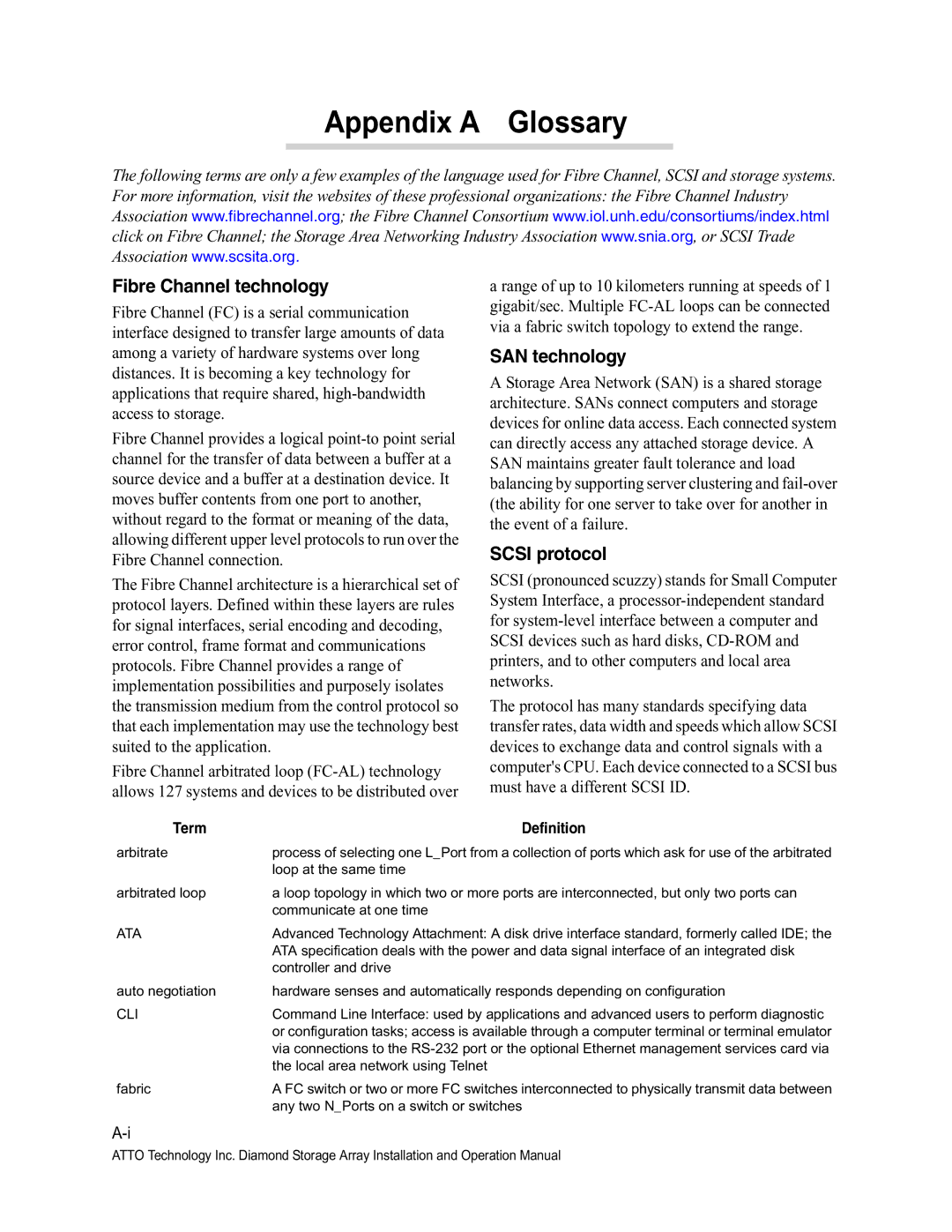Appendix A Glossary
The following terms are only a few examples of the language used for Fibre Channel, SCSI and storage systems. For more information, visit the websites of these professional organizations: the Fibre Channel Industry Association www.fibrechannel.org; the Fibre Channel Consortium www.iol.unh.edu/consortiums/index.html click on Fibre Channel; the Storage Area Networking Industry Association www.snia.org, or SCSI Trade Association www.scsita.org.
Fibre Channel technology
Fibre Channel (FC) is a serial communication interface designed to transfer large amounts of data among a variety of hardware systems over long distances. It is becoming a key technology for applications that require shared,
Fibre Channel provides a logical
The Fibre Channel architecture is a hierarchical set of protocol layers. Defined within these layers are rules for signal interfaces, serial encoding and decoding, error control, frame format and communications protocols. Fibre Channel provides a range of implementation possibilities and purposely isolates the transmission medium from the control protocol so that each implementation may use the technology best suited to the application.
Fibre Channel arbitrated loop
a range of up to 10 kilometers running at speeds of 1 gigabit/sec. Multiple
SAN technology
A Storage Area Network (SAN) is a shared storage architecture. SANs connect computers and storage devices for online data access. Each connected system can directly access any attached storage device. A SAN maintains greater fault tolerance and load balancing by supporting server clustering and
SCSI protocol
SCSI (pronounced scuzzy) stands for Small Computer System Interface, a
The protocol has many standards specifying data transfer rates, data width and speeds which allow SCSI devices to exchange data and control signals with a computer's CPU. Each device connected to a SCSI bus must have a different SCSI ID.
Term | Definition |
arbitrate | process of selecting one L_Port from a collection of ports which ask for use of the arbitrated |
| loop at the same time |
arbitrated loop | a loop topology in which two or more ports are interconnected, but only two ports can |
| communicate at one time |
ATA | Advanced Technology Attachment: A disk drive interface standard, formerly called IDE; the |
| ATA specification deals with the power and data signal interface of an integrated disk |
| controller and drive |
auto negotiation | hardware senses and automatically responds depending on configuration |
CLI | Command Line Interface: used by applications and advanced users to perform diagnostic |
| or configuration tasks; access is available through a computer terminal or terminal emulator |
| via connections to the |
| the local area network using Telnet |
fabric | A FC switch or two or more FC switches interconnected to physically transmit data between |
| any two N_Ports on a switch or switches |
ATTO Technology Inc. Diamond Storage Array Installation and Operation Manual
